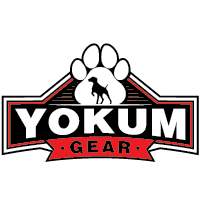Reactivity in dogs can manifest as barking, lunging, or aggressive behaviors often triggered by particular stimuli such as other dogs, people, or specific scenarios. Addressing these behaviors requires a structured and humane approach. Below, we explore effective reactivity training techniques to help your dog become calmer and more manageable in challenging situations.
Understanding Reactivity
Before delving into training techniques, it’s essential to understand what reactivity is and what triggers it. Reactivity often stems from fear, frustration, or excitement. Identifying your dog’s specific triggers can help tailor a training plan that addresses their unique needs. Keeping a journal of reactive incidents can be a useful tool to pinpoint patterns and triggers.
Positive Reinforcement
Positive reinforcement involves rewarding your dog for calm and desirable behaviors. This technique helps build a positive association with previously triggering stimuli. Treats, toys, or praise can be used as rewards to encourage calm behavior.
Steps to Implement Positive Reinforcement:
1. Identify a high-value reward your dog loves.
2. Start at a distance where the trigger is visible but does not provoke a strong reaction.
3. Reward your dog for looking at the trigger without reacting.
4. Gradually decrease the distance to the trigger, continuing to reward calm behavior.
5. Be patient and consistent, progressively getting closer to the trigger over time.
Desensitization and Counter-Conditioning
Desensitization involves exposing your dog to a low-level version of the trigger and gradually increasing its intensity, whereas counter-conditioning changes your dog’s emotional response to the trigger.
Steps for Desensitization and Counter-Conditioning:
1. Start with the trigger at a distance where your dog can remain relaxed.
2. Pair the presence of the trigger with something positive like treats or play.
3. Gradually bring the trigger closer, ensuring your dog stays below their reactivity threshold.
4. Continue to pair the trigger with positive experiences.
5. Over time, aim for your dog to associate the trigger with positive outcomes rather than reacting to it.
Teaching Alternative Behaviors
Training alternative behaviors can redirect your dog’s focus from the trigger to a positive action. This technique can be particularly effective when combined with positive reinforcement.
Steps to Teach Alternative Behaviors:
1. Identify and teach a new behavior such as “sit,” “watch me,” or “leave it.”
2. Practice the new behavior in a low-distraction environment until your dog performs it reliably.
3. Introduce the trigger at a distance while asking for the new behavior.
4. Reward your dog for performing the alternative behavior in the presence of the trigger.
5. Gradually increase the difficulty by bringing the trigger closer, ensuring your dog remains successful in responding.
Creating a Calm Environment
A calm environment can help your dog manage its reactivity more effectively. Reducing stressors at home and during walks can make a significant difference in behavior.
Tips for Creating a Calm Environment:
1. Stick to a consistent routine for feeding, walking, and training.
2. Use calming aids like pheromone diffusers or anxiety wraps if necessary.
3. Provide mental and physical enrichment through puzzles, training games, and regular exercise.
4. Avoid exposure to triggers that are overwhelming for your dog whenever possible.
Professional Guidance
If your dog’s reactivity is severe or if you’re struggling to make progress, seeking professional guidance is highly advisable. A certified dog behaviorist or a professional dog trainer with experience in reactivity can provide valuable insights and personalized training plans to address your dog’s specific issues.
Conclusion
Training a reactive dog requires patience, consistency, and a compassionate approach. By using positive reinforcement, desensitization, counter-conditioning, teaching alternative behaviors, and creating a calm environment, you can help your dog become less reactive and more comfortable in previously challenging situations. Remember, progress may be gradual, but with perseverance and the right techniques, significant improvements are achievable.

